Search
Did you mean: Isis?
Search Results

Article
Siege of Sevastopol in 1941-2
The siege of Sevastopol (Oct 41 to Jul 42) was an attack by Axis forces on the base of the USSR's Black Sea Fleet during Operation Barbarossa of the Second World War (1939-45). Sevastopol (aka Sebastopol) had one of the world's strongest...

Collection
Native American Creation & Origin Stories
Native American creation and origin stories are tales of the creation of the world and the origin of various aspects of it, including plant and animal life – especially corn and buffalo – and death. Some Native American trickster tales are...
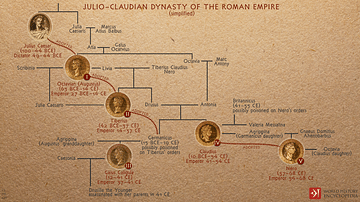
Image
Julio-Claudian Dynasty of the Roman Empire
A depiction of the evolution of the first imperial dynasty of ancient Rome, the Julio-Claudians that began with Augustus (Julius Caesar's adopted son) and included the reigns of Tiberius, Caligula, Claudius, and Nero. During their time, Rome...

Image
Seven Macaw or Vucub-Caquix
A replica of an architectural decoration from the Mayan ballcourt of Copan. It represents the god Seven Macaw (Vucub-Caquix) who was killed by the Hero Twins in Book II of the Popol Vuh. (Museum of Mayan Sculpture, Copan, Honduras)
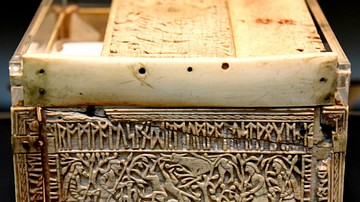
Image
Romulus & Remus Panel of the Franks Casket
This panel depicts a scene from the famous Roman legend of twin brothers, Romulus and Remus. Abandoned as children, they were rescued and suckled by a she-wolf (centre). Another wolf, perhaps her mate, licks their feet, while men with spears...
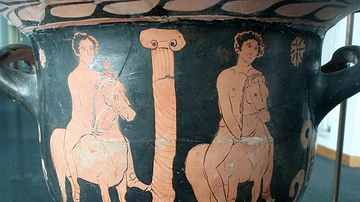
Image
Castor and Pollux
A red-figure vase possibly depicting Castor and Pollux (the Dioscuri), the hero twins of Greek mythology. 420-400 BCE, Lucanian. (Museo Provinciale Archeologico 'S. Castromediano,' Lecce, Italy)

Image
Temple of Castor & Pollux
The three remaining Corinthian columns of the Temple of Castor & Pollux in the Roman Forum, Rome. The present temple dates from the end of the 1st century BCE and early 1st century CE but replaced a temple also dedicated to the demi-god twins...
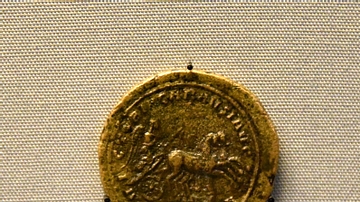
Image
Medallion of Carausius
The rebel Carausius (Marcus Aurelius Mausaeus Valerius Carausius) declared himself emperor, making Britain his base. Although he had no authority in Rome, he stressed his Roman identity by citing the poet Virgil on his coins. He also used...

Image
Legio II Italica
A coin presenting the symbol of Legio II Italica, the she-wolf with twins. By Emperor Gallienus.
Credits to: Classical Numismatic Group
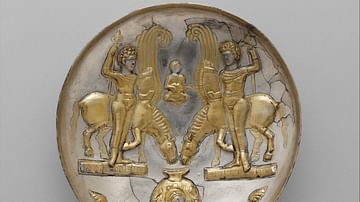
Image
Sassanian Plate with Winged Horses
This gilded silver Sasanian plate features an unusual scene that borrows from Graeco-Roman prototypes and possibly Iranian ones as well. Two youths stand on platforms facing one another, each holding a staff and the reins of a winged horse...